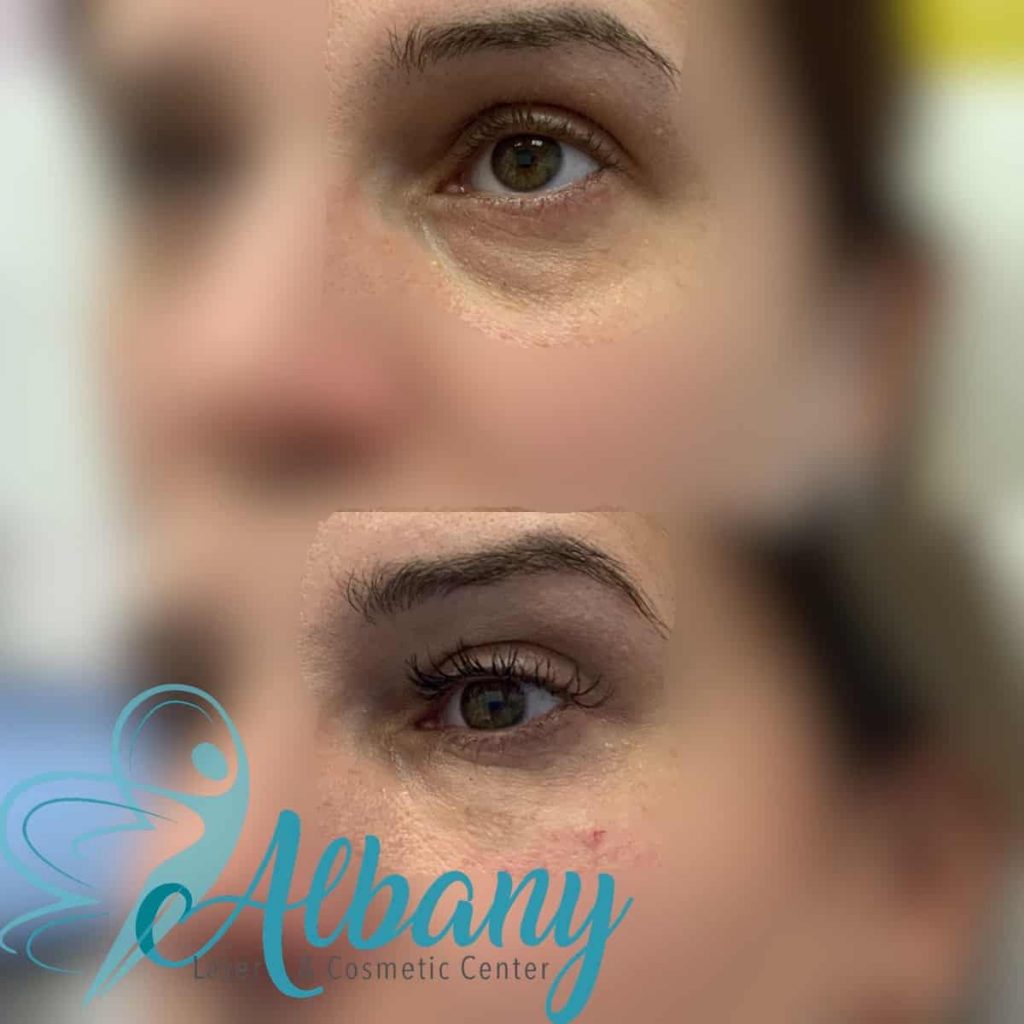What causes dark undereye circles?
Undereye aesthetic problems such as dark circles can be genetics or come with aging. However, regardless of the causality, they share the same concerns of having a shadow under the eye and looking tired all the time.
The fat loss (fat atrophy) on the top of the Orbicularis Oculi muscle (undereye area) results in saggy skin and less light reflection, thus, the dark shadow.
Undereye Fillers Procedure
Most undereye fillers use a blunt cannula to prevent bruising and injection complications.
Dr. Alhallak (Pharmacist with Ph.D.) makes a small hole using an epidermic sharp needle and inserts a 25G TSK cannula to implement the fillers.
The filler we use for undereye is Judeverm Volbella; we decided after trying different fillers brands.
Dr. Kamal (Pharmacist with Ph.D.) does not inject more than one syringe of fillers for undereye at one session; he tends to correct the undereye concern up to 60% and give the fillers two weeks to blend in and expand after absorbing water.
Results
These pictures were taken before and directly after the procedure using one syringe of fillers.
Undereye fillers Cost
This is a service, and each injector evaluates his experience differently; we charge $750 for the service of undereye fillers.
Tear Trough Fillers
A tear trough is a prominent furrow between the lower eyelid and the upper cheek. It might sometimes create a shadow behind your eyes, giving you a fatigued look. Certain individuals believe their tear troughs make them seem older. Tear troughs are a hereditary feature in certain people.
Tear troughs grow more apparent with age in others. This is because as we age, our face tissues lose volume. A tear trough filler’s purpose is to lessen the depth of a tear trough. A competent medical expert injects a dermal filler into the region, plumping and tightening the skin. It is a non-surgical approach to rejuvenating the face.
However, tear-trough fillers offer several advantages and disadvantages like other face fillers. Before undergoing therapy, it is critical to understand the technique and any problems.
What is the purpose of Undereye filler?
A tear trough filler is a dermal filler injected under the eyes. It is used to increase the volume behind the eyelids. This region’s most often utilized product is hyaluronic acid; however, other components may be employed. Hyaluronic acid promotes fullness and diminishes indentations when injected into the skin.
Fillers for tear troughs are usually safe. Additionally, they are less invasive than tear trough operations, which often include fat grafting and repositioning.
The FDA has authorized just one brand of under-eye filler to augment the fullness of a hollow under-eye region in adults 22 years of age: Juvederm Volbella. However, permission does not imply that the surgery is risk-free.
The FDA has not authorized needle-free devices for dermal filler injections, so be careful to inquire about the kind of filler you are getting and always seek treatment from a competent physician, not a medical spa or aesthetician. Additionally, the effects of tear trough fillers are transient. They typically last around a year. Repeated treatments will be necessary to sustain long-term benefits.
Correction of under-eye bags with tear trough filler Case No. 1106
Undereye Fillers Results: Case No. 1302
